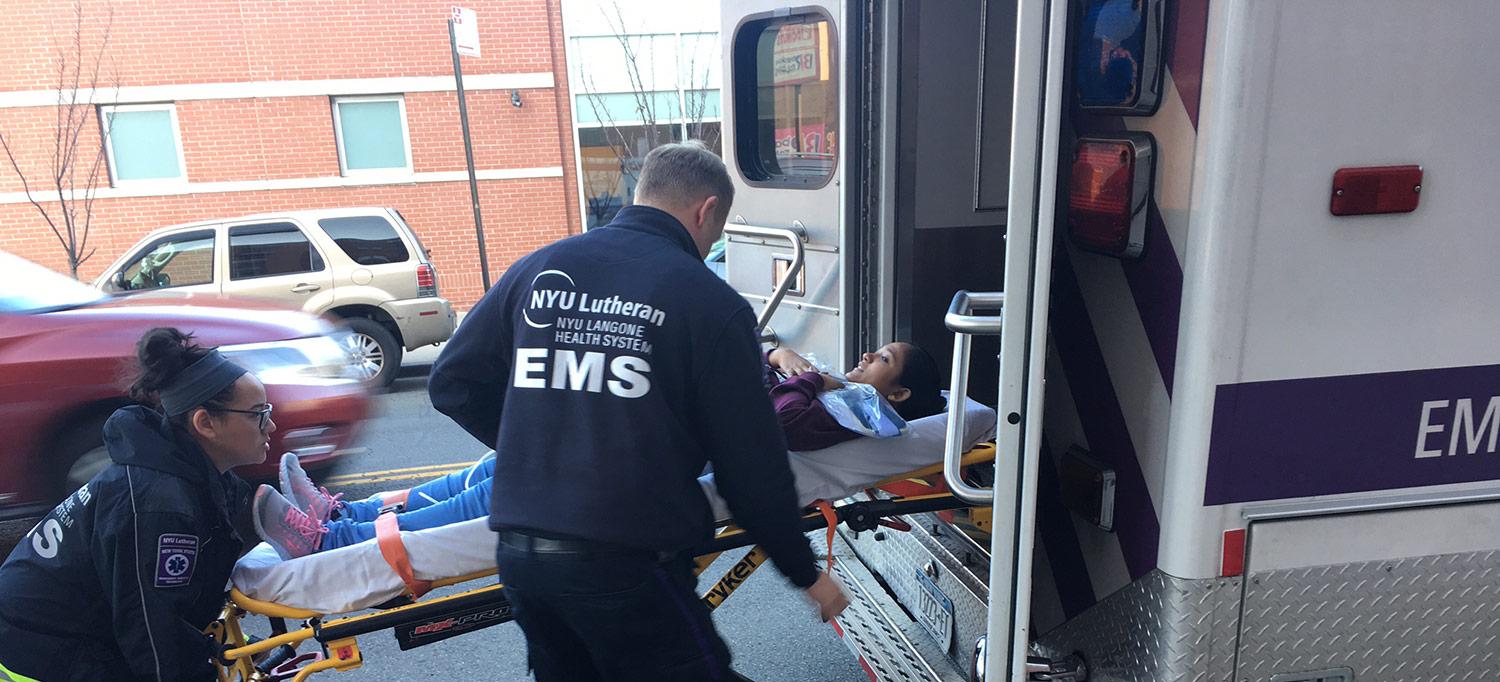One of Brooklyn's Busiest Emergency Departments Sets New Standards to Improve Care

Eight ambulances, owned and operated by NYU Langone, are based at NYU Langone Hospital—Brooklyn.
NYU Langone Staff
NYU Langone Hospital—Brooklyn’s emergency department (ED) is one of the busiest in the city, treating 75,000 patients annually. But the figure Robert Femia, MD, chair of NYU Langone’s Ronald O. Perelman Department of Emergency Medicine, finds most telling and compelling is this one: more than 20 percent of the patients who visit NYU Langone Hospital—Brooklyn’s ED require hospitalization—twice the national average. That means that these patients are acutely ill, he explains, a common problem in underserved communities, where health issues often go untreated until they reach a crisis point. “These patients need and deserve top-notch care,” says Dr. Femia, “and NYU Langone has made a commitment to provide that to NYU Langone Hospital—Brooklyn—across the board.”
The investment is already paying off. Thanks to several initiatives, outcomes have improved for some of the most serious health crises, such as heart attack, stroke, and sepsis. Patients who have suffered a heart attack, for example, often require a catheterization procedure, and performing one within 90 minutes of their arrival reduces damage to the cardiac muscle. “We work closely with our nursing and cardiology teams to make sure this happens,” says Nicholas Gavin, MD, chief of service for NYU Langone Hospital—Brooklyn’s ED. Now that NYU Langone owns and operates eight ambulances based at NYU Langone Hospital—Brooklyn, an EKG report is available while the patient is en route to the ED. “By using evidence-based medicine and establishing protocols around best practices,” notes Dr. Femia, “patients get better, more timely care.”
Among NYU Langone Hospital—Brooklyn’s initiatives is an effort to optimize space. To better serve its pediatric patients—some 13,000 annually—the ED has established a dedicated pediatric unit, set apart from the adult section, and added 5 specialists in pediatric emergency medicine. To reduce hospital admissions, it has also configured a new 12-bed observation unit for patients who are not ready to be discharged or require further testing. Plans are under way to build an expanded observation unit adjacent to the ED.
But perhaps the biggest initiative is the adoption of a team-based model of emergency care. Last August, NYU Langone Hospital—Brooklyn’s ED replaced its contracted physicians with full-time NYU Langone faculty members, all trained to work in small teams assigned to a certain number of beds for better communication and monitoring. The newly hired cohort of specialists—24 care for adults, and 9 treat children—includes 4 who are trained in both emergency medicine and critical care medicine, ensuring smooth handoffs when patients need to be transferred to the critical care unit. “These recruits are from high-volume emergency departments nationwide,” says Dr. Femia, “and because they’re all on staff, they are deeply committed to NYU Langone Hospital—Brooklyn and its patients.”
All of which adds up to better, faster care. NYU Langone Hospital—Brooklyn’s ED can generally evaluate patients within 20 minutes of their arrival. “The waiting rooms of some EDs in Brooklyn overflow,” notes Dr. Gavin, “but ours is typically empty.”

